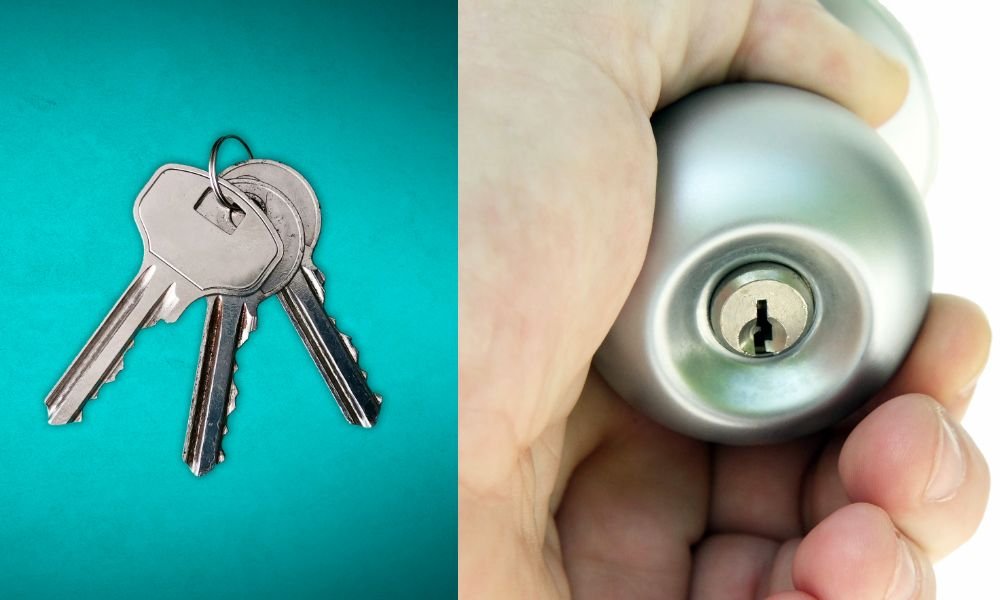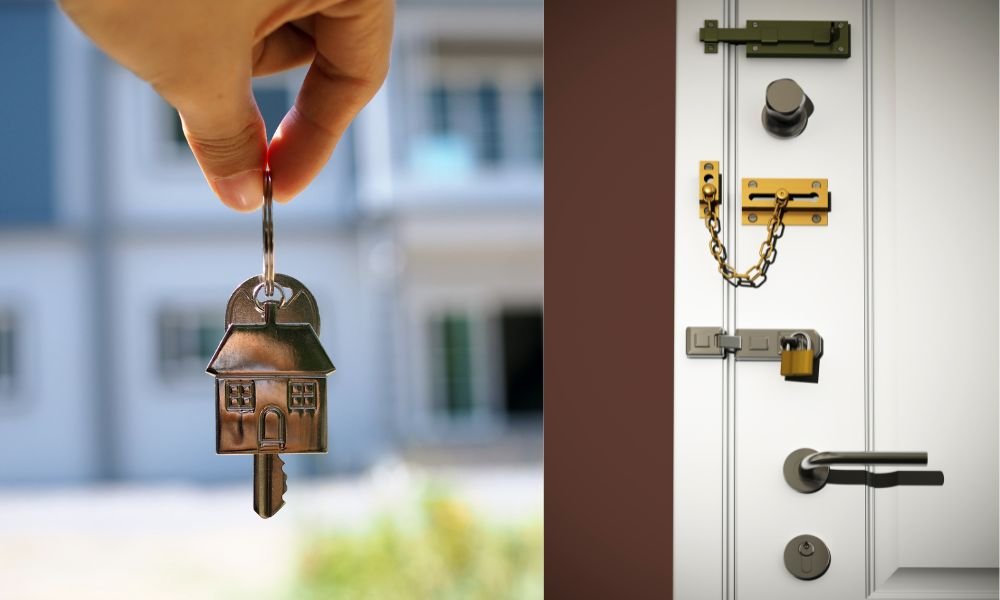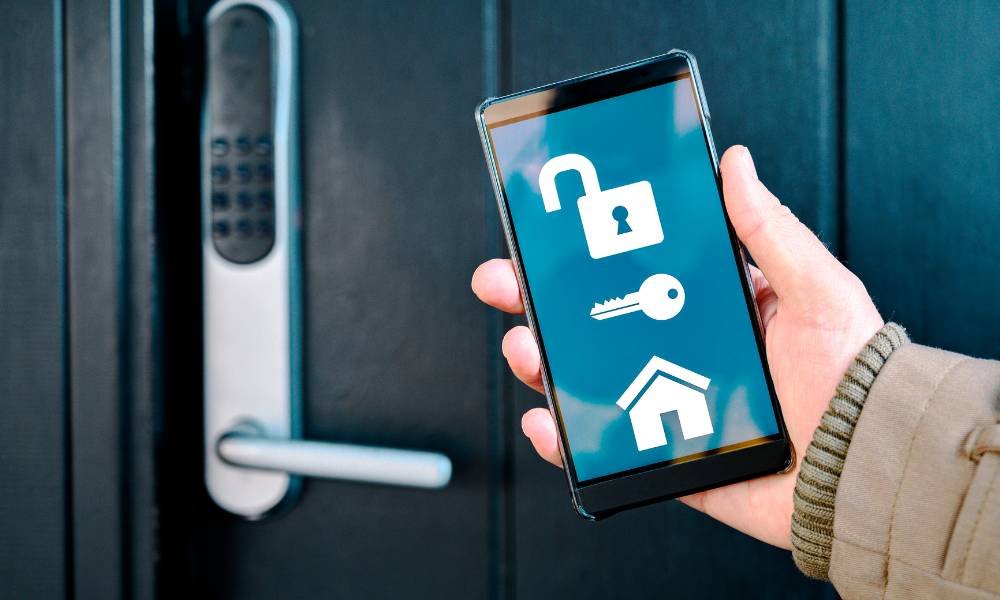Crafting a guide on “How to Open a Door Lock Without a Key” involves exploring traditional and innovative methods. This blog post aims to provide a detailed exploration of various techniques. Ensuring that readers can navigate their way through such predicaments with or without specific tools at hand.
Encountering a locked door when the key is nowhere to be found can be a daunting situation. Whether it’s due to a lost key or a lockout scenario, knowing how to open a door without a key can prove invaluable. This guide explores several methods to unlock doors, emphasizing the importance of utilizing these techniques responsibly and legally. From simple tools found in most households to more sophisticated methods, we cover a range of solutions for different types of locks.
Key Tools are Needed
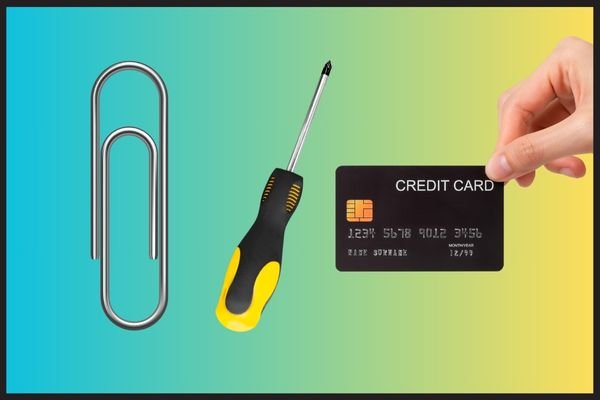
Opening a door without a key typically requires some tools, which vary depending on the method employed. Basic tools might include paperclips, credit cards, or screwdrivers, while more advanced techniques may require specialized lock-picking sets or air wedges. Having a set of tools handy can prepare you for different scenarios, ensuring that you’re equipped to handle various types of locks with confidence. Each method detailed below offers a solution tailored to specific lock mechanisms, highlighting the necessity of understanding the underlying principle behind each lock type.
Simply Open by Using a Slip Card or Credit Card
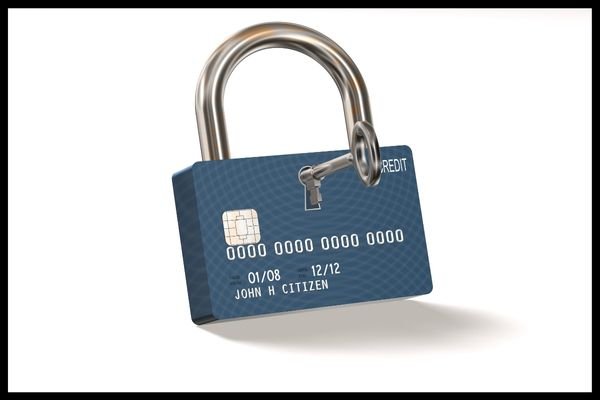
One of the simplest methods to unlock a spring latch security device is by using a slip card or credit card. This technique involves sliding the card between the door frame and the latch, then wiggling and pushing the card downward to force the latch back into the door, thereby unlocking it. This method is particularly effective on doors without reinforced strike plates but requires a flexible and sturdy card that you’re willing to potentially damage. While straightforward, this approach exemplifies the ingenuity in unlocking mechanisms with everyday items.
Open Through Paperclip or Bobby Pin
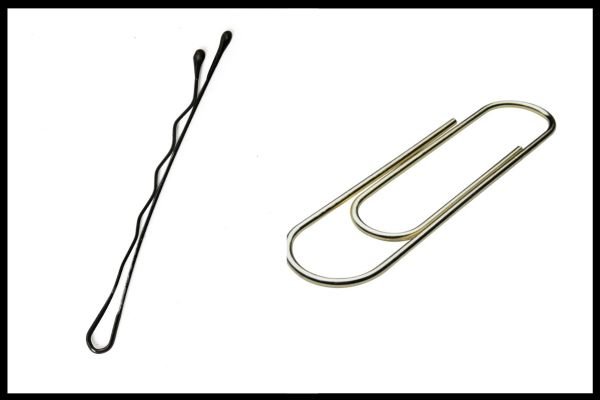
For pin tumbler locks, a paperclip or bobby pin can be transformed into a makeshift picking tool. Straightening the clip or pin and then carefully inserting it into the lock allows for manipulation of the pins inside. The goal is to move the pins to the correct position, aligning them so the lock can turn. This method demands patience, precision, and a gentle touch, as haphazard movements can damage the lock or break the tool inside it. Despite these challenges, this approach is a testament to the simplicity and effectiveness of basic tools in emergency situations.
Lock Picking Set
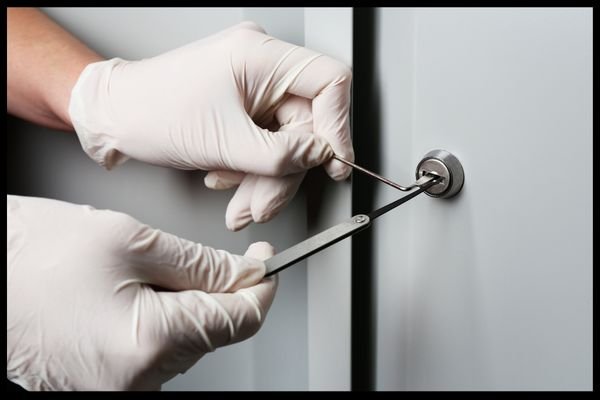
This set provides a more professional and reliable means of opening a lock without a key. These sets include various tools designed to manipulate the pins in a pin tumbler security device, such as tension wrenches and picks of different shapes. Skilled use of these tools allows for precise control over the lock mechanism, offering a non-destructive way to gain entry. However, mastering lock picking requires practice and an understanding of the lock’s inner workings, making it a method best suited for those willing to invest time in learning the craft.
Air Wedge and Rod
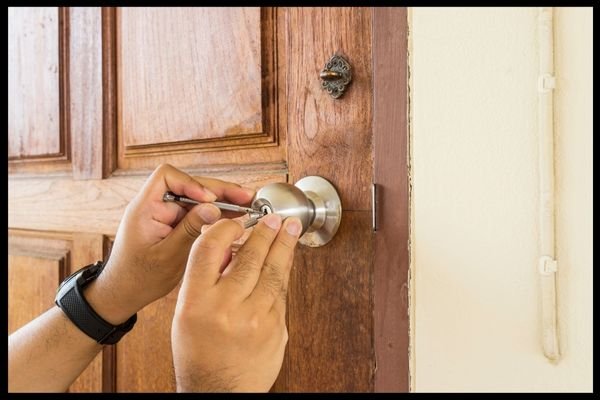
The air wedge and rod method, common in auto lockouts, can be adapted for certain building door types. It involves inserting an air wedge to create a small gap. This allows for the insertion of a rod or slim jim to manipulate the lock or handle from the inside. This method provides a non-destructive means of entry, useful when direct manipulation of the lock mechanism is not possible.
Remove the Doorknob and Open

Removing the doorknob or handle can be an effective method for doors that are not deadbolted. This usually involves unscrewing the mounting screws that hold the doorknob in place, allowing direct access to the locking mechanism. Once removed, the mechanism can often be manually manipulated to unlock the door. This method needs basic tools and mechanical knowledge, offering a simple way to bypass locks without harming the door.
Freezing Spray and Hammer

Using freezing spray and a hammer forcefully breaks padlocks, typically when lock damage isn’t a concern in specific situations. The freezing agent renders the metal of the lock brittle, facilitating its breaking upon receiving a sharp blow from a hammer. This method should only be employed as a last resort, considering the urgency of entry against property preservation concerns.
Drilling the Door
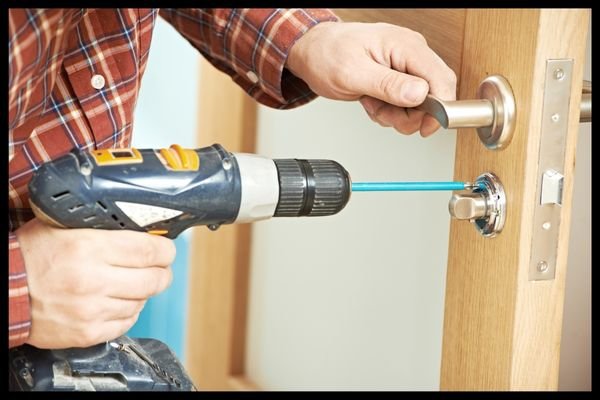
Drilling the Door is another destructive method, used as a last resort when other techniques fail or are not viable. This involves drilling directly into the locking mechanism to destroy the pins, allowing the device to turn freely. While effective, it renders the lock unusable and requires replacement. This method should only be considered when access is absolutely necessary, and the lock can be replaced.
Conclusion
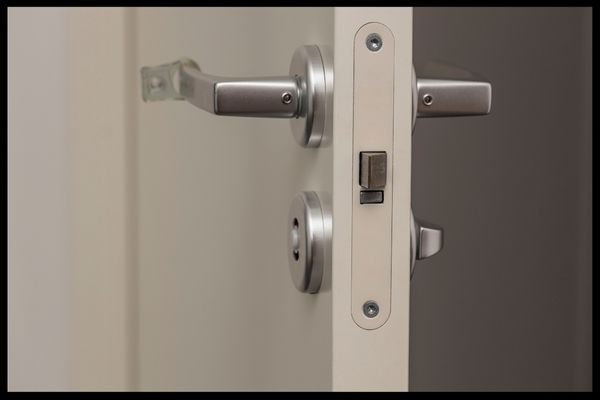
While knowing how to open a door without a key, it’s crucial to use these methods responsibly. Always ensure you have the right to open the lock in question and consider the potential damage to the door. In many cases, especially with high-security or when you’re unsure of the technique, call a locksmith is the safe option. Remember, the goal is to regain access with minimal damage and within the bounds of the law.

